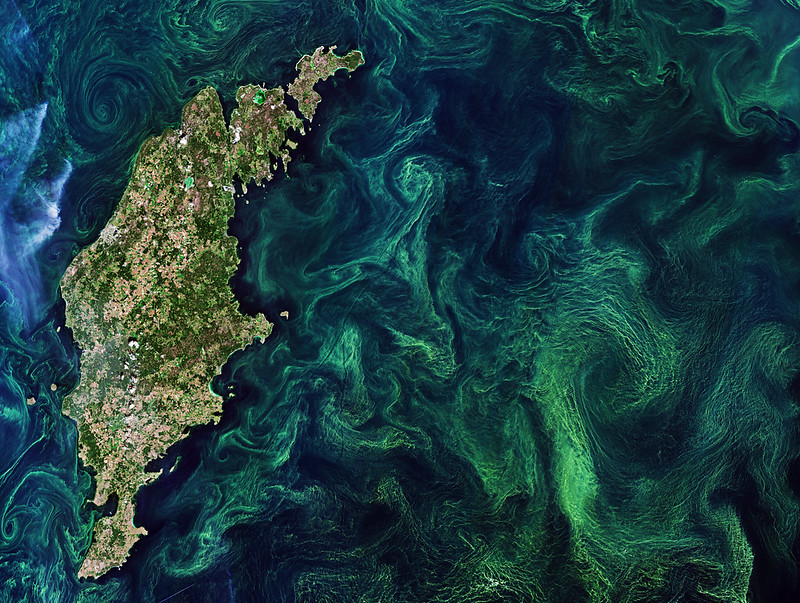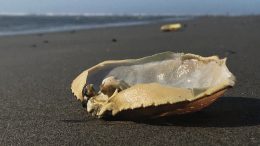Ask someone on the street about the importance of the Amazon, and there’s a reasonable chance the response will include an understanding that forests play an essential role in storing and cycling global carbon. Follow that question with another on the importance of ocean phytoplankton, and there are good odds on it being met with a shrug.
Yet the significance of ocean phytoplankton is nearly impossible to overstate.
Drifting in the top layer of the world’s oceans, phytoplankton are a diverse group of microscopic, photosynthetic organisms. Most are single-celled algae, some are bacteria, and others are classified as protists – neither plant nor animal. Phytoplankton are estimated to produce nearly half the daily oxygen in our atmosphere, and as the basis of the ocean food web, sustain all major marine life forms. When they die, a percentage sink to the ocean floor, sequestering as much carbon as all terrestrial plants.
“If phytoplankton populations were to suffer significant decline, there would be serious consequences for marine food webs, including fisheries, and changes to the balance of nutrient cycling,” says Dr. Katherina Petrou, senior lecturer in phytoplankton ecophysiology at the University of Technology Sydney in Australia, via email.
How phytoplankton will respond to the effects of climate change is a pressing and stubborn research question. Study is made complicated by an array of interdependent variables that include warming surface sea temperatures, ocean acidification, and changes in sea ice and cloud cover.
A decade ago, Canadian researchers made headlines with an alarming study estimating ocean phytoplankton populations had dropped 40% since 1950, and were continuing to decline at a rate of around 1% per year, with ocean warming from climate change suspected. The findings were hotly debated, and in the years since, a more nuanced yet still alarming picture of how phytoplankton will fare under climate change has begun to emerge.
In a 2015 study by two of the same Canadian researchers, projections of phytoplankton concentrations are described as “highly divergent.” Taken in aggregate, the paper maintains published research shows phytoplankton numbers increasing in near-shore waters over shorter, more recent time spans, and declining in open oceans over longer periods. “Most published evidence suggests changes in temperature and nutrient supply rates as leading causes of these phytoplankton trends,” the study reads.
“Global modeling studies using historical data have revealed declines in phytoplankton over the last few decades, but with variability between oceans and regions, and even some patches where phytoplankton have increased,” says Petrou. “Based on these data, studies using computer models to project future conditions conclude that in many parts of the ocean, phytoplankton will decline as seas warm and water mixing patterns change.”
Warming Water
Given access to sunlight and nutrients, phytoplankton can bloom in numbers of millions of cells per litre of seawater. But as the oceans warm, the water column is forming into more distinct layers, and staying that way for longer periods. The result is a layer of warmer water sitting atop cooler, nutrient-rich water beneath. When this stratification begins it can promote blooms by keeping phytoplankton cells in the upper layer, near sunlight, says Oscar Schofield, a professor at the department of marine and coastal sciences at Rutgers University. However as the bloom progresses, phytoplankton exhaust the nutrients available to them. Stratification can then prevent the resupply of nutrients into the upper layer, says Schofield, causing phytoplankton concentrations to fall, resulting in a net decline.
Climate change is shifting not only the intensity of phytoplankton blooms, but their composition. Harmful algal blooms (also known as red tides) are expected to increase as the oceans warm. Biotoxins released from the blooms can cause large-scale die-offs of fish and shellfish, with knock-on effects to coastal economies.

“In some cases we see species growing faster, but in many instances warmer temperatures are altering ecosystems,” Petrou says. “Some species are recorded as moving towards the Polar regions, where water temperatures are lower. However, for current Polar species this poses a bit more of a problem, as they have nowhere cooler to move to.”
Schofield studies phytoplankton off the Antarctic Peninsula, the western arm of the Antarctic that reaches up toward South America. “It’s the fastest warming place on the planet in terms of winter air temperature,” he says, “so we see a lot less sea ice being made every year.” There, Schofield says, satellite observation suggests large phytoplankton declines.
But on the Antarctic Peninsula, Schofield theorizes it’s not too little mixing in the water column causing declines, but too much.
Lacking the protection of sea ice, the ocean undergoes deep mixing from strong winter winds. This disperses the free-floating phytoplankton deeper into the water column, limiting their access to sunlight. “It takes longer for that deep mixing to settle down and promote phytoplankton growth,” Schofield says. The warmer, moister climate also promotes cloud formation instead of cold, clear conditions, again limiting sunlight available to the phytoplankton.
Acidification Winners and Losers
In simple terms, ocean acidification is the ongoing decrease of seawater pH caused by the absorption of atmospheric carbon dioxide. When seawater reacts with CO2 it creates carbonic acid, which breaks down to release hydrogen and bicarbonate ions. The surplus hydrogen ions increase the acidity of the oceans.
Ocean acidification will reshape marine food webs, most notably by making it more difficult for organisms such as shellfish, starfish, snails, and corals to build their shells or exoskeletons from calcium carbonate. For phytoplankton as a whole, however, the response to ocean acidification is more nebulous.
An exception to this uncertainty is a group of phytoplankton called coccolithophores, which are vulnerable to acidification because they too build calcified exoskeletons. “They cover their cell walls with tiny chalk platelets,” says Petrou. “Increasing acidity has been shown to dissolve these plates, in the same way that a tooth will dissolve in a glass of cola.”
Another type of phytoplankton, diatoms, are single-celled algae that produce around half the organic matter in the ocean, and one-fifth of the oxygen you are breathing right now. Instead of calcium carbonate, diatoms build cell walls out of silica.
Research by Lennart Bach, a postdoctoral researcher at the Institute for Marine and Antarctic Studies at the University of Tasmania, tends to indicate diatoms will benefit from increased ocean acidity. “CO2 is required for photosynthesis,” Bach says. “So in itself it is not the issue.”
But it’s not so simple. “There’s winners and losers within the phytoplankton community with respect to basically every environmental factor that will change,” Bach says. “Temperature, CO2, stratification, light, environment, there are a lot of factors. And when you only look at one like acidification, then they are on the winning side, but of course, you have to consider all factors because they will occur all at the same time in the future ocean. So it’s really hard to say.”
Declines or increases of phytoplankton types, relative to other phytoplankton, could also spell trouble. In a 2019 meta-analysis of studies on diatoms’ response to acidification, Bach and a colleague write: “[Diatoms’] prevalence relative to other phytoplankton taxa could profoundly alter marine food web structures and thereby affect ecosystem services such as fisheries or the sequestration of CO2 in the deep ocean.”
As well, a recent experiment by Petrou and other scientists discovered that in the Southern Ocean, future ocean acidification may hamper diatoms’ ability to build silica cell walls. At simulated rates of acidification possible before century’s end, the diatoms were smaller and lighter. With their ballast reduced, the cells would be less able to sink to the ocean floor and sequester carbon.
A study published in Nature in 2018, by an international team of researchers, also suggests that increased acidification could interfere with a poorly understood mechanism that allows diatoms to acquire iron — an essential nutrient for the algae.
“The decline in diatom ability to take up iron will reduce growth, while the loss in ability to form dense silica shells will alter diatom sinking rates and increase their susceptibility to grazers,” Petrou says. “Combined, the two processes suggest diatoms are in for a hard time under future ocean conditions.”
“We’re changing the climate, and that’s going to change a lot of the basic conditions we see in the ocean,” says Schofield. “And the thing about the ocean is, generally, it’s bottom up controls, meaning that if you change the food at the base of the web, it ripples directly up…. If and when that happens globally, it will change our planet. But we’re still at a point where we can’t give a quick, easy answer.”
This story first appeared in the Watershed Sentinel and was published under a Creative Commons license.
![]()



4 thoughts on “Will Climate Change Threaten Earth’s Other ‘Lung’?”
Comments are closed.